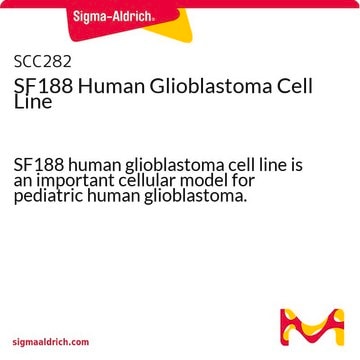Recommended Products
product name
HT 1197, 87032403
biological source
human bladder
growth mode
Adherent
karyotype
2n = 46
morphology
Epithelial
products
Not specified
receptors
Not specified
technique(s)
cell culture | mammalian: suitable
relevant disease(s)
cancer
shipped in
dry ice
storage temp.
−196°C
Related Categories
Cell Line Origin
Human Caucasian bladder carcinoma
Cell Line Description
Derived from a grade 4 transitional cell carcinoma of the bladder of a 44 year old Caucasian male who had not received chemo or radiation therapy. The cells grow in soft agar, produce fibrinolytic activity and are tumorigenic in mice and hamsters.
Application
HT 1197 has been used to study the transcription activity of human endogenous retroviruses (HERV).
DNA Profile
STR-PCR Data: Amelogenin: X,Y
CSF1PO: 11,12
D13S317: 11,12
D16S539: 12,13
D5S818: 12
D7S820: 11,12
THO1: 6,9.3
TPOX: 11,12
vWA: 16,18
CSF1PO: 11,12
D13S317: 11,12
D16S539: 12,13
D5S818: 12
D7S820: 11,12
THO1: 6,9.3
TPOX: 11,12
vWA: 16,18
Culture Medium
EMEM (EBSS) + 2mM Glutamine + 1% Non Essential Amino Acids (NEAA) + 10% Foetal Bovine Serum (FBS).
Subculture Routine
Split sub-confluent cultures (70-80%) 1:2 to 1:6 i.e. seeding at 2x10,000 to 5x100,000 cells/cm2 using 0.25% trypsin or trypsin/EDTA; 5% CO2; 37°C.
Other Notes
Additional freight & handling charges may be applicable for Asia-Pacific shipments. Please check with your local Customer Service representative for more information.
Certificates of Analysis (COA)
Search for Certificates of Analysis (COA) by entering the products Lot/Batch Number. Lot and Batch Numbers can be found on a product’s label following the words ‘Lot’ or ‘Batch’.
Already Own This Product?
Find documentation for the products that you have recently purchased in the Document Library.
Our team of scientists has experience in all areas of research including Life Science, Material Science, Chemical Synthesis, Chromatography, Analytical and many others.
Contact Technical Service





